Between Heaven And Earth
Horsepower Vineyards
Sur Echalas Vineyard Syrah 2013
Double decant( no sediment). An enticing medium ruby red color. On the nose: funky!.....hints of wet earth, truffles, black olives, stewed meat, red fruit explode from the glass. Taste: blueberry, tar, chocolate, blackberrys, minerals...nice silky smooth decent length finish — 7 years ago

I Giusti & Zanza
Toscana IGT Sangiovese Blend 2015
Fantastic. Needs to breathe a bit. Wet stone on the nose, the tannins come through with lovely berries, dried or sugared. Almond skin, maybe. A good compromise between oaky and earth spice. — 7 years ago
Jean Foillard
Côte du Py Morgon Gamay 2016
Superb nose of cherry and earth and blood. Very intense! The palate is superb too with an exquisite balance between a delicious cherry juice and a long acid backbone. Slight tannins kick in in the end to mark a long finish with fruits and cherry moonlight notes. Once again foillard delivers big time in a more subtle, precise way than 14 and 15. My favourite Beaujolais producer — 8 years ago
Red Car
Heaven & Earth Bohemian Station Pinot Noir 2009
Château Cos d'Estournel
Saint-Estèphe Red Bordeaux Blend 1991
Is there any meal better than steak (Ribeye) and well aged Claret? This is another 1991 Bordeaux experiment of mine. 1991 was a vintage with horrible frosts and a less than favorable growing season, right? A vintage critically panned. This is my 3rd recent 91 from a good producer. And again, it didn’t disappoint. Like 97 and 07, it’s better with the right bottle age than young. Magic evolution happened in the bottle way down the road. This 91 is in great form with a fair amount of life ahead of it. On the nose; a little ripe fruit funk, wonderful dark & lighter red cassis, ripe blackberries, dark cherries, poached strawberries, plums, hues of blueberries, black raspberries, dry cranberries, vanilla, light cinnamon, rich, black turned earth, cedar, soft leather, dry stones, dry top soil, notes of dry herbs and fresh & dry red flowers. The body/palate is medium, round, ripe & still fresh. The tannins nearly completely resolved. Ripe, floral fruits of; blackberries, dark cherries, poached strawberries, plums, hues of blueberries, black raspberries, dry cranberries & half cooked rhubarb. Vanilla, light cinnamon, touch of clove & nutmeg, rich, black turned earth, cedar, soft leather, dry stones, dry crushed rocks, dry top soil, notes of dry herbs, a little band-aid and fresh & dry red flowers. The acidity drips over the palate and the long, well balanced, still structured, nice tension, good length finish lasts over a minute. Again, love & appreciate the 12.5% alcohol. What a beauty with and without the steak. Next time you’re in your fine wine retail shop and see a quality producers 91 that’s been well stored, buy it and have it with a Ribeye. Photos of; their exotic Estate, Chateau interior, newer barrel room and their vines as viewed from the front of the Chateau that are across the road. Producer notes and history...Cos d’Estournel has a long distinguished history in the St. Estephe. Louis Gaspard d’Estournel, gave his name to the estate after founding in 1811. It did not take long before Cos d’Estournel became famous with wine lovers and royalty all over the world. In those early days, Cos d’Estournel did not sell through Negociants. The owner preferred selling his wine directly to his customers. In fact, Cos d’Estournel was exported to numerous countries across the globe, with a large portion of the production being sold to India. It was that connection to India that inspired much of the unique, east Indian design we see at Cos d’Estournel today. Cos d’Estournel was one of the first Bordeaux Chateaux’s to bottle, label and sell their own wine. This practice continued until the death of Louis Gaspard d’Estournel in 1852. If you’re at the property, the statue on the bench in the front courtyard is of the founder, Louis Gaspard d’Estournel. The Estate was then purchased by an owner that sold their wines on the Place de Bordeaux using the negociant system. If the Chateau was not selling their wines through the negociant system, it would never have been included in the 1855 Classification. Imagine that! So, it turned out to be a fortuitous decision. Cos d’Estournel was sold to the Charmolue family owners of the neighboring Estate of Chateau Montrose. They continued to own the estate until 1917, when it was bought by Fernand Ginestet. This purchase was the beginning of the next major step in the development of Cos d’Estournel. Decades later, the grandchildren of Fernand Ginestet, Jean-Marie Prats, Yves Prats and Bruno Prats took over ownership and management of Cos d’Estournel. In 1995, Bruno Prats sold the property to the Merlaut family, owners of the Taillan Group. The next era in the development of Cos d’Estournel took place in 2000, when Cos d’Estournel was bought by the industrious and wealthy Michel Reybier, who earned his fortune in the food industry. Michel Reybier hired the son of Bruno Prats, Jean-Guillaume Prats to manage Cos d’Estournel. Things further improved with the efforts of Jean-Guillaume Prats who helped design the most modern wine making at that time. A complete renovation of Cos d’Estournel took place in not only the wine making facilities and cellars, but in parts of the Chateau as well. While the wine making facilities are completely modern with their 100% gravity design, the outward appearance retained the original design and feeling that has always been a part of Cos d’Estournel. On October 15, 2012, Jean Guillaume Prats announced he was leaving Cos d’Estournel to join LVMH (Pichon Baron). Jean Guillaume Prats was replaced by Aymeric de Gironde. Following the departure of Aymeric de Gironde in 2017, the owner, Michel Reybier took over managing the Estate. What makes the remodel special is that the cellars of Cos d’Estournel are entirely operated by gravity. There are no pumps of any kind to force the wine. The purpose is to allow a gentleness to the wine and improve its purity and allow for the expression of their terroir. It set a new benchmark for cellars not only in the Left Bank, but in all of Bordeaux. Perhaps, the most inventive part of the cellars is the four 100 hectoliter lift tanks or wine elevators that replace the pumps used in the traditional pumping over and the racking off processes, which introduce air and often destabilize the marc. From the moment the grapes arrive, everything travels by the flow of gravity. Jean Guillaume Prats called this process a “pumpless pump over.” The 91 hectare vineyard of Cos d’Estournel is planted to 65% Cabernet Sauvignon, 33% Merlot, 1% Cabernet Franc and 1% Petit Verdot. The vineyard is located extremely close to the border between Pauillac and Saint Estephe at the southern tip of the Saint Estephe. The Estate has very old Merlot vines as well, which date back more than 100 years. Part of the terroir is situated on the hill of Cos, which is at a high elevation for the Medoc at 20 meters. They also make a second wine called Pagodes de Cos. This is a great wine to buy in very good vintages. Especially, if your budget prohibits you from purchasing their first wine. — 8 years ago

Sandhi Wines
Sanford & Benedict Vineyard Pinot Noir 2012
Old world style from California central coast. The nose is redolent of Luxardo cherries and Antica Formula vermouth. On the palate, there is a battle between fruit and earth; deep, earthy forest flavors are offset by bright, tart spring cherries. Coastal botanicals play against wild fruit. Better than expected. — 9 years ago
Prince Florent de Merode
Clos du Roi Corton Grand Cru Pinot Noir 1999
One of the best bottles of GC Burg I've had. This is in perfect form right now. Showing a perfect intermingled harmony between fruit and tertiary vinous character. Not over oaked at all. Very tart intact red and black cherries with acrid pomegranate and bramble. A kiss of brett with moist, mossy soil like earth including a white button mushroom presence. Dusty stone minerality with a cedar and light pepper finish. This is quite wonderful. I think 99 burgundy is just so spot on to drink now. — 10 years ago

R. López de Heredia
Viña Tondonia Reserva Rioja Tempranillo Blend 2007
Now when we’ve been praising the new generation of Rioja, it is time to pay tribute to a classic, and there’s nothing more classic in Rioja than R. Lopez de Heredia. The 2007 Reserva is a homerun, aged with such an grace yet with a vital fruit, balanced between the clusters as it‘s evolving from its primary red fruit that is spiced with a volatile lift, through herbs, cedar and leather before hitting the earth with mushrooms and truffles. The palate glides through with a silky texture, yet with a good grip, well defined presence and a proud posture. — 6 years ago
Château Belle-Vue
Haut-Médoc Red Bordeaux Blend 2007
As a Sommelier, it’s interesting to read professional reviews. Something you need to keep up on for what consumers will be looking to buy.
As someone who attends a lot of tastings, you get to get to do your own comparisons. For me, a lot of Bordeaux. It’s my true love. I’ve been to Bordeaux eleven times. Two of them En Premiers.
When I tasted this so called critically difficult/bad vintage from Chateau Belle-Vue, I saw its potential and wasn’t wrong. Now, eleven years later, this wine is singing. While the critics haven’t tasted this wine as recently as this year, they would tell you this wine was average. It is anything but! If I put this wine in a blind tasting, I am confident many would call higher end Napa Cabernet and this is a Bordeaux producer from an ancillary region, under the radar known producer and a difficult vintage.
If I’ve learned anything about wine, it’s in all difficult vintages anywhere, there are producers who still make good wine. This one is magic for around $20 upon release. I’ve had $100 a bottle plus Bordeaux and Napa Cabernet that weren’t this good.
The nose shows, ripe, earthy fruits of; blackberries, black raspberries, black plum, dark cherries, creamy raspberries on the glass edges, some blueberries & boysenberries and baked plum. Rich, forest floor, steeped black tea, used coffee grounds, limestone minerals, crushed, dry, rock powder, black licorice, hints of herbaceous notes, touch of mushroom, purple flowers, violets and faint lavender.
The body is full, round and lush. The structure, tension, length and balance are harmonious. The tannins are dark, round, soft, velvety and slightly tarry. Ripe, earthy fruits of; blackberries, black raspberries, black plum, dark cherries, creamy raspberries on the glass edges, some blueberries & boysenberries and baked plum. Rich, forest floor, steeped black tea, used coffee grounds, tarry notes, limestone minerals, crushed, dry, rock powder, dry top soil & clay, black licorice, dark cocoa powder, cinnamon, dark spice, some vanilla, hints of herbaceous notes, touch of mushroom, graphite, burnt charcoal, suede leather, pipe tobacco, purple flowers, violets, dark red florals and faint lavender. The acidy round & beautiful. The finish is; ripe, ruby, lush, elegant, well balanced between fruit & earth and persistent for minutes.
The well know professional critics would tell you this wine is old or late. I will tell you, from my storage, it’s has another 7-10 years of life ahead of it.
Have it with a good butchered Ribeye (not store bought) seasoned with coarse ground garlic salt & pepper.
Photos of, a modest Chateau Belle-Vue, the beautiful backside of the chateau, barrel cellar and Estate vines.
— 7 years ago

The Standish Wine Company
Single Vineyard Shiraz 2003
I can’t pour enough praise on Dan and his talents. I don’t give many wines near perfect scores, but this merits one. The nose is a beautifully balanced mix of floral fruits, earth and spice. Blackberries, huckleberries, boysenberries, black plum, black raspberries, plum, black raspberries, poached strawberries, dark moist soils, loamy dry soil/clay, raspberry cola, smoked meats, medium dark spice, vanilla, clove, nutmeg, lilacs, violets and lavender. The balance is incredible...one of the most balanced wines I’ve had. The structure, tension and length are so close to perfect. It’s in the OMG realm. The tannins are nicely resolved but still have teeth. It’s gorgeously lush and rich. Blackberries, huckleberries, boysenberries, black plum, black raspberries, plum, black raspberries, poached strawberries, hues of blue fruits haunt the palate, dark moist soils, loamy dry soil/clay, raspberry cola, black licorice, touch herbaceous, smoked meats, medium dark spice, vanilla, clove, nutmeg, black & white pepper, dry crushed rocks, stones, lilacs, violets and lavender. The finish is heaven all the way around. To borrow Bordeaux terminology, this is First Growth Shiraz. If you don’t seek out Dan’s wines on the secondary market, you are missing something special. Not at all meant to be enjoyed young. This wine is in a very good spot and has another 10 years of life going forward. — 8 years ago

Bernard Faurie
Hermitage Syrah 2007
This was the Greffieux Bessards blend. Rich layered fruit, and a distinct scorched earth/smoked meat note. So much umami on the finish - reminded me of really good wet brisket. Medium scaled with a moderately long finish, it alternated between highly expressive and a little shy. Not sure if it's lacking a little concentration or just a bit too young - not a ton of tannic structure evident. Delicious with lots of character, but not quite a wow wine. — 9 years ago
Chateau Ste. Michelle
Horse Heaven Vineyard Sauvignon Blanc
Strong grapefruit flavor, balanced between sweet and acidic — 9 years ago
Charly Thevenet
Grain & Granit Régnié Gamay
this is an excellent fall wine. almost feels a bit like a pinot- dark fruit, cranberries, and an earthy/animal funk.... mostly i got an interplay between earth and berries- all within a refreshingly light body/fine mouthfeel. — 9 years ago
Williams Selyem
Russian River Valley Pinot Noir 2010
1st wine of blind KWN. Good balance between cherry tart and earth. Figured it was a little older than 2010. Wine #5 of the evening in a standout lineup. — 10 years ago
Bruna Grimaldi
Camilla Barolo Nebbiolo 2008
Good typicity. Dried cranberry, red currant, red plum, dried rose, violets, organic and inorganic earth, moderate level of VA, normal for the style. Bridge between modern and old style. Paired well with a debate concerning the carrying capacity of European vs African swallows, ascertaining the guilt of a witch, and a near-fatal battle with a bloodthirsty rabbit :) — 10 years ago
Red Car
Heaven & Earth La Bohème Pinot Noir 2007
A medium ruby-red, the'07 Red Car Pinot Noir 'Heaven & Earth - La Bohème Vineyard' is scented with seductive red raspberry, Dr. Pepper and savory herb aromas. Some earthy overtones on the spicy red fruit mouth flavors. Surprising rich and dense given its lighter color. Some noticeable heat on the vibrant spicy finish. — 11 years ago
Domaine de Chassorney
Les Roncerets Volnay 1er Cru Pinot Noir 2014
So so deep. A perfect example of when varying volnay 1er can ‘easily stand up to neighboring grand crus’. At first this came off like an ambitious Cali pinot but the complexity underneath the ripeness and dry extract was too bold to deny. This continued to unfold perfectly into a strong bouquet of dark dried flowers and earth at times crossing into motor oil, tires, dark leather car interior. The balance between freshness, density, ripeness, delicacy, feminine, and masculine is undeniable in this wine. Cossard is absolutely a master flexing in his ability. Winemaking, including viticulture, for this must be a proprietary technique. Obviously not even a touch of sulfur or additive manipulation in this wine. Completely wild and I still would never expect this to deteriorate over time. This is well worth the $100 or so that you will spend on this. I think any other producer putting out character like this in a wine would cost twice the price. Cossard is not necessarily under the radar but I have a feeling this style is not as embraced as it could be. — 6 years ago
Columbia Crest
H3 Horse Heaven Hills Cabernet Sauvignon 2015
$12 and 91pts at Costco. Pretty clean with some earth. Really good. Jen say buy more. — 7 years ago
Château Lynch-Bages
Grand Cru Classé Pauillac Cabernet Sauvignon Blend 2000
The 2000 is delicious but, it is evolving at a glacial pace. Out of magnum.
On the nose, touch of barnyard, glycerin, ripe; blackberries, dark cherries, black raspberries, plum, strawberries & cherries. Vanilla, dry clay, limestone, river stones, just a touch of pyrazines & bandaid, dark,,turned, moist earth, dry grass and dry & fresh dark florals.
The body is full, round & sexy. Dry softened, sweet tannins. ripe; blackberries, dark cherries, black raspberries, plum, strawberries & cherries. Vanilla, dry clay, limestone, river stones, just a touch of pyrazines & bandaid, fresh tobacco leaf, saddle-wood, dry underbrush, dark, turned, moist earth, dry grass and dry & fresh dark florals. The acidity is magnificent. The structure, tension, length and balance are sensational. The finish is drop dead gorgeous. I’d still hold mine another 5 years as long as you have 3-4 bottles for more 5 year increments.
Photos of, their Estate vines, Clyde Beffa-Owner of K&L Wine Merchants, Owner of Chateau Lynch Bages - Jean-Michel Cazes, guests of the dinner and a sunset view from their Estate.
Producer notes and history...Lynch Bages takes its name from the local area where the Chateau is located in Bages. The vineyard of what was to become Lynch Bages was established and then expanded by the Dejean family who sold it in 1728 to Pierre Drouillard.
In 1749, Drouillard bequeathed the estate to his daughter Elizabeth, the wife of Thomas Lynch. This is how the estate came to belong to the Lynch family, where it remained for seventy-five years and received the name Lynch Bages. However, it was not always known under that name.
For a while the wines were sold under the name of Jurine Bages. In fact, when the estate was Classified in the 1855 Classification of the Medoc, the wines were selling under the name of Chateau Jurine Bages. That is because the property was owned at the time by a Swiss wine merchant, Sebastien Jurine.
In 1862, the property was sold to the Cayrou brothers who restored the estate’s name to Chateau Lynch family.
Around 1870, Lou Janou Cazes and his wife Angelique were living in Pauillac, close to Chateau Pichon Longueville Baron. It was here that Jean-Charles Cazes, the couple’s second son, was born in 1877.
In the 1930’s, Jean-Charles Cazes, who was already in charge of Les-Ormes-de-Pez in St. Estephe agreed to lease the vines of Lynch Bages. By that time, the Cazes family had history in Bordeaux dating back to the second half of the nineteenth century.
This agreement to take over Lynch Bages was good for both the owner and Jean Charles Cazes. Because, the vineyards had become dilapidated and were in need of expensive replanting, which was too expensive for the owner. However, for Cazes, this represented an opportunity, as he had the time, and the ability to manage Lynch Bages, but he lacked the funds to buy the vineyard.
Jean-Charles Cazes eventually purchased both properties on the eve of the Second World War. Lynch Bages and Les-Ormes-de-Pez have been run by the Cazes family ever since. In 1988, the Cazes family added to their holdings in Bordeaux when they purchased an estate in the Graves region, Chateau Villa Bel Air.
Around 1970, they increased their vineyards with the purchase of Haut-Bages Averous and Saussus. By the late 1990’s their holdings had expanded to nearly 100 hectares! Jean-Michel Cazes who had been employed as an engineer in Paris, joined the wine trade in 1973. In a short time, Jean Michel Cazes modernized everything at Lynch Bages.
He installed a new vat room, insulated the buildings, developing new technologies and equipment, built storage cellars, restored the loading areas and wine storehouses over the next fifteen years. During that time period, Jean Michel Cazes was the unofficial ambassador of not just the Left Bank, but all of Bordeaux. Jean Michel Cazes was one of the first Chateau owners to begin promoting their wine in China back in 1986.
Bages became the first wine sent into space, when a French astronaut carried a bottle of 1975 Lynch Bages with him on the joint American/French space flight!
Beginning in 1987, Jean-Michel Cazes joined the team at the insurance company AXA, who wanted to build an investment portfolio of quality vineyards in the Medoc, Pomerol, Sauternes, Portugal and Hungary.
Jean-Michel Cazes was named the director of the wine division and all the estates including of course, the neighboring, Second Growth, Chateau Pichon Baron.
June 1989 marked the inauguration of the new wine making facilities at Lynch Bages, which was on of their best vintages. 1989 also marked the debut of the Cordeillan- hotel and restaurant where Sofia and I had one of our best dinners ever. A few years after that, the Village de Bages with its shops was born.
The following year, in 1990, the estate began making white wine, Blanc de Lynch Bages. In 2001, the Cazes family company bought vineyards in the Rhone Valley in the Languedoc appellation, as well as in Australia and Portugal. They added to their holdings a few years later when they purchased a vineyard in Chateauneuf du Pape.
In 2006, Jean-Charles Cazes took over as the managing director of Chateau Lynch Bages. Jean-Michel Cazes continues to lead the wine and tourism division of the family’s activities. Due to their constant promotion in the Asian market, Chateau Lynch Bages remains one of the strongest brands in the Asian market, especially in China.
In 2017, Chateau Lynch Bages began a massive renovation and modernization, focusing on their wine making, and technical facilities. The project, headed by the noted architects Chien Chung Pei and Li Chung Pei, the sons of the famous architect that designed the glass pyramid for the Louvre in Paris as well as several other important buildings.
The project will be completed in 2019. This includes a new grape, reception center, gravity flow wine cellar and the vat rooms, which will house at least, 80 stainless steel vats in various sizes allowing for parcel by parcel vinification.
The new cellars will feature a glass roof, terraces with 360 degree views and completely modernized reception areas and offices. They are not seeing visitors until it’s completion.
In March, 2017, they purchased Chateau Haut Batailley from Françoise Des Brest Borie giving the Cazes family over 120 hectares of vines in Pauillac!
The 100 hectare vineyard of Lynch Bages is planted to 75% Cabernet Sauvignon, 17% Merlot, 6% Cabernet Franc and 2% Petit Verdot. The vineyard has a terroir of gravel, chalk and sand soils.
The vineyard can be divided into two main sections, with a large portion of the vines being planted close to the Chateau on the Bages plateau. At their peak, the vineyard reaches an elevation of 20 meters. The other section of the vineyard lies further north, with its key terroir placed on the Monferan plateau.
They also own vines in the far southwest of the appellation, next Chateau Pichon Lalande, on the St. Julien border, which can be used in the Grand Vin. The vineyard can be split into four main blocks, which can be further subdivided into 140 separate parcels.
The average age of the vines is about 30 years old. But they have old vines, some of which are close to 90 years old.
The vineyards are planted to a vine density of 9,000 vines per hectare. The average age of the vines is about 30 years old. But they have old vines, some of which are close to 90 years old.
Lynch Bages also six hectares of vine are reserved for the production of the white Bordeaux wine of Chateau Lynch Bages. Those vines are located to the west of the estate. They are planted to 53% Sauvignon Blanc, 32% Semillon and 15% Muscadelle. On average, those vines are about 20 years of age. Lynch Bages Blanc made its debut in 1990.
To produce the wine of Chateau Lynch Bages, vinification takes place 35 stainless steel vats that vary in size. Malolactic fermentation takes place in a combination of 30% French, oak barrels with the remainder taking place in tank.
The wine of Chateau Lynch Bages is aged in an average of 70% new, French oak barrels for between 12 and 15 months. Due to the appellation laws of Pauillac, the wine is sold as a generic AOC Bordeaux Blanc, because Pauillac does not allow for the plantings of white wine grapes.
For the vinification of their white, Bordeaux wine, Blanc de Lynch-Bages is vinified in a combination of 50% new, French oak barrels, 20% in one year old barrels and the remaining 30% is vinified in vats. The wine is aged on its lees for at least six months. The white wine is sold an AOC Bordeaux wine.
The annual production at Lynch Bages is close to 35,000 cases depending on the vintage.
The also make a 2nd wine, which was previously known as Chateau Chateau Haut Bages Averous. However, the estate changed its name to Echo de Lynch Bages beginning with the 2007 vintage. The estate recently added a third wine, Pauillac de Lynch-Bages.
— 8 years ago


Red Car
Heaven & Earth Sonoma Coast Pinot Noir 2012
Not characteristic of other Sonoma pinots I've had. Lush and fruity with nice acid. — 9 years ago
Brewer-Clifton
Clos Pepe Vineyard Pinot Noir 2005
A classic example of the great wines made by Greg Brewer and Steve Clifton, this wine is drinking beautifully. A hypothetical hybrid between a central coast pinot and a Grand Cru burgundy, this wine exhibits a nose of sour cherries, strawberries, with an undercurrant of spice and earth. Seamless finish. An absolute pleasure to drink. — 10 years ago

Lock & Key
Meritage North Coast Cabernet Sauvignon Blend 2010
Excellent balance between fruit, body, and earth. Would buy again. — 13 years ago








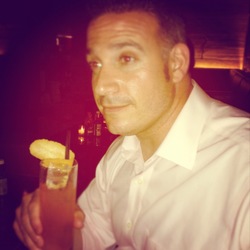

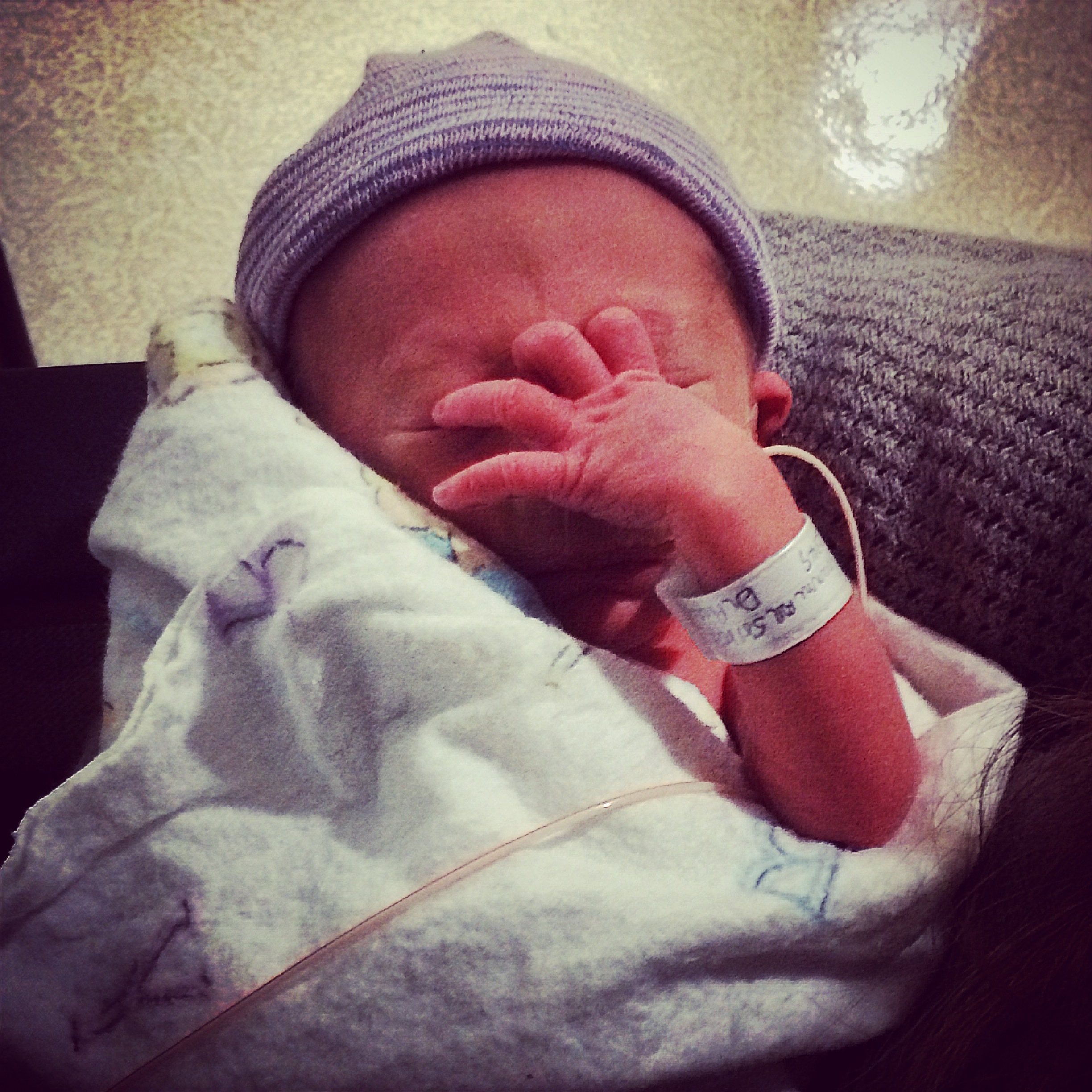



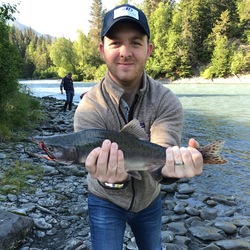



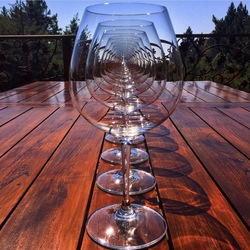


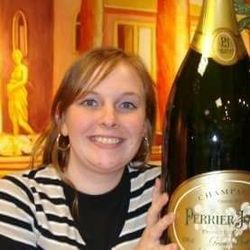




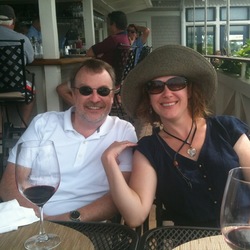

Joe Gillies
Super bowl! Let's go Chiefs! Amazing! Black cherry, raspberry, cassis, graphite, and earth. Decanted for 60 minutes. — 6 years ago